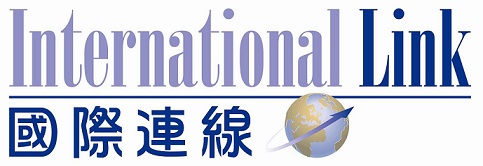亞洲環保會議 全球精英交流廢物再生新技術
亞洲環保會議 全球精英交流廢物再生新技術
包裝紙、即棄餐具、剩菜剩飯等。每天都有大量都市廢物產生,要守護地球,減廢成為全球倡議的命題。在第八屆國際環保博覽期間舉行的「亞洲環保會議」日前以「廢物處理及循環再造」為題的一場綠色對話,各業界共同探討減廢新方案。
香港每日人均產生一點二七公斤都市固體廢物,數量遠高於其他城市,面對三大堆填區接近飽和,廢物處理問題迫在眉睫,減廢是最大的出路。環保署副署長林啟忠出席「亞洲環保會議」時表示,跟首爾及台北等比較,本港減廢基礎設施仍未完備。
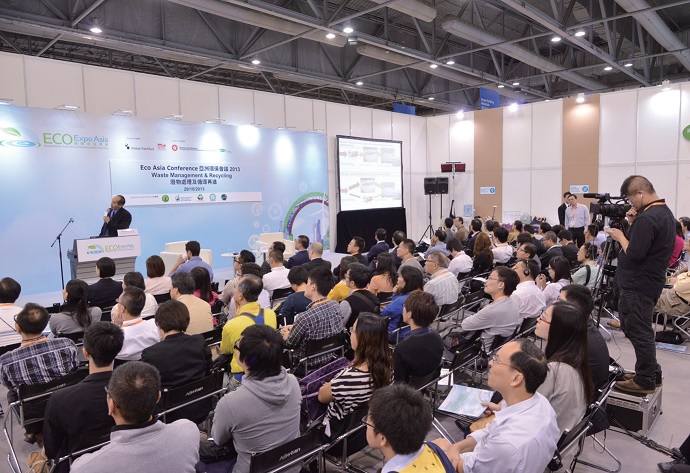
第八屆國際環保博覽期間舉行的「亞洲環保會議」坐無虛設。
No seats were untaken at the Eco Asia Conference, at the 8th Eco Expo Asia.
港府帶頭鼓勵減廢
「為達到二零二二年減廢60%的目標,政府將以鼓勵減廢、提高效率、修改法例等方面着手,包括加強回收工作,以及研究透過垃圾徵費方案,推動源頭減廢。」林啟忠又指,本港食肆分佈零碎,廚餘回收難度大,政府會在不同地區設立定點廚餘處理站,吸引更多企業及酒店食肆參與回收。
將廢物循環再生,轉化成有用的物料,是處理垃圾問題的一大出路。廢物處理系統服務商歐綠保研發出運用烘乾方式把生活垃圾轉化成綠色煤炭的技術,不但避免傳統堆填和焚燒處理方式衍生的污染問題,產出的綠色煤更可作為能源補給。
廢料變身綠色煤供能源
該公司亞洲法律及業務發展總監Tobias Fabian Huinink指出,技術於一九九七年在德國開始應用,至今已經有二千六百噸廢物通過這種技術被轉化,並為德國供應15%的所需能源,市區亦達到零廢物。這項技術已踏入第三代,發展得相當成熟,不會對環境構成影響,適合生活垃圾量大的內地及香港應用。
此外,英國廢物處理系統服務商Orchid Environmental品牌發展總監Alistair Starkie補充,固體廢物亦可經液化或氣化處理,當中轉化過程會產出二氧化碳、鉀烷、氮氣、氫氣、酒精等,部分可變作生化能源發電。
日本JFE工程技術公司海外本部長岡本敦認為,採用轉化技術進行綜合處理是處理固體廢物的最佳對策:「人均GDP達五千美元或以上的國家及地區,均具備興建『廢轉能』設備的財政條件,包括中國、日本及新加坡等,但中國的設備水平仍有待改善。」他又舉例說︰「例如地少人多的新加坡,就把60%廢物作回收處理,37%廢物則被焚化產生能源,只有少量的不可燃物料被送往堆填區;日本68%採用熱處理廢物,回收及堆填分別佔20%及12%。」
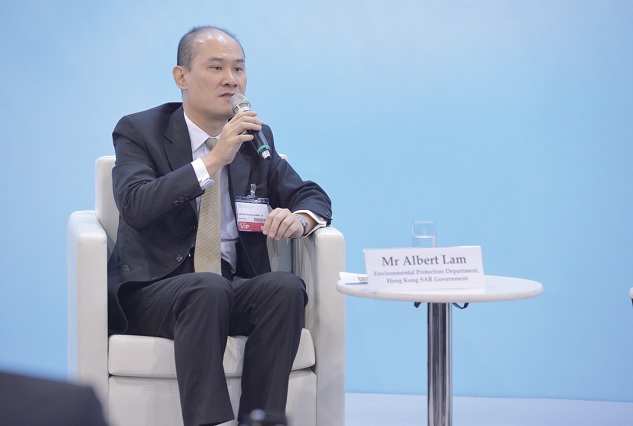
環保署副署長林啟忠出席「亞洲環保會議」時表示,跟首爾及台北等比較,本港減廢基礎設施仍未完備。
Albert Lam, Deputy Director of the Environmental Protection Department, said at the Eco Asia Conference that Hong Kong’s waste reduction infrastructure is still behind those of Seoul and Taipei.
日本倡導舊家電取原料
廢物蘊藏寶庫,像雪櫃、電視等家電廢品就含金屬、塑膠和玻璃等原料,包括松下在內的日本企業便回收家電來提取有用原料。日本松下電器循環再造事業推進部參事中山滋彦指出,金屬等天然資源產量正在減少,要從礦山中提取一公斤銅,便要翻開300公斤泥土。
因開發成本高,引發日本發展從棄置家電中提取金屬等原料的計劃,市民亦非常響應:「截至今年七月,日本已由舊家電中回收了逾十五萬噸鐵、二萬四千噸銅及一萬三千噸鋁。」
日本參展商展示無煙焚化爐
面對用者自付的垃圾處理徵費大方向,越來越多企業和機構選擇自行處理廢物。除了將部分廢物回收再造,自行將垃圾焚化亦是其中一個選擇。日本知名企業中和機工株式會社旗下品牌Chuwastar以出色的無煙焚化技術聞名。旗下F-1S型號小型焚化爐在國際環保博覽,首次在港亮相。這款產品利用火水作燃料、無需使用柴油運作,亦不會釋出有毒廢氣。這款焚化爐特別適用於處理醫療廢物,亦有效處理廢舊產品的混合物,適合醫院和物業管理公司等使用。公司更在博覽期間安排多場現場示範,展示如何無煙焚化車胎及PET塑膠。
------------------------------------------------------------------------------------
World experts discuss new technologies in waste recycling at Eco Asia Conference
Wrapping paper, disposable tableware, leftovers… an enormous amount of municipal waste is produced every day. Environmental protection and waste reduction have become a global issue. With the theme “Waste Management and Recycling”, yesterday’s Eco Asia Conference, held during the 8th Eco Expo Asia, saw participants engaged in a green dialogue exploring new solutions for waste reduction.
Hong Kong produces a per capita 1.27kg of municipal solid waste each day, an amount way higher than that of other cities in the region. The three landfills are close to saturation point, and the city’s waste problem has become imminent. Waste reduction is the most effective solution. Albert Lam, Deputy Director of the Environmental Protection Department, said at yesterday’s Eco Asia Conference that compared to Seoul and Taipei, Hong Kong’s waste reduction infrastructure is still inadequate.

Tobias Fabian Huinink, ALBA Asia’s Director of Legal & Business Development – Greater China, said his company’s wasteto-green coal technology is widely used in Germany.
歐綠保亞洲法律及業務發展總監TobiasFabian Huinink 介紹,該公司研發把生活垃圾轉化成綠色煤炭的技術,在德國被廣泛應用。
Hong Kong Government takes the lead in waste reduction
“To achieve the 60% waste reduction target by 2022, the government will be promoting waste reduction, improving efficiency, and undertaking legislative amendments, etc., including stepping up recycling and implementing waste charging, to promote waste reduction at source.” Lam remarked that the implementation of food waste recycling is not easy in Hong Kong as restaurants are scattered across the city. The government will be setting up food waste processing stations at different points in Hong Kong to attract more corporations, hotels and restaurants to recycle.
Recycling waste into useful materials is one of the main ways to tackle Hong Kong’s waste problem. Waste management service provider ALBA Asia has developed a technology that turns waste into green coal. The technology is a departure from traditional landfilling and incineration that pollute the environment. The green coal produced can even be used for power generation.
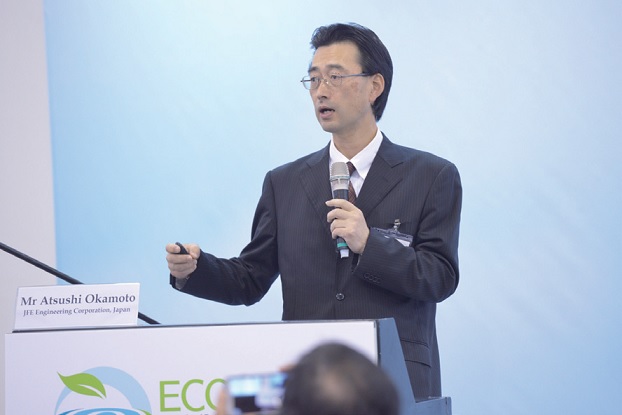
Atsushi Okamoto, Managing Director, Overseas Business Sector of JFE Engineering Corporation, considered an integrated approach to waste management using conversion technologies the best solution.
日本JFE 工程技術公司海外本部長岡本敦認為,採用轉化技術進行綜合處理是處理固體廢物的最佳對策。
Turning waste into green coal for power generation
Tobias Fabian Huinink, ALBA’s Director of Legal & Business Development – Greater China, said the technology has been in use in Germany since 1997, and has converted some 2,600 tones of waste, provided 15% of Germany’s energy needs, and achieved zero waste in urban areas. The technology is in its third generation and is already very mature, it is safe for the environment and is suitable for places with an enormous amount of waste, such as the Chinese mainland and Hong Kong.
Alistair Starkie, Brand Development Director of UK’s waste management service provider Orchid Environmental, added that solid waste can be processed through liquefaction or gasification, and the carbon dioxide, potassium chloride, nitrogen, hydrogen, and ethanol, etc., produced during the process can be used for generating electricity.
Atsushi Okamoto, Managing Director, Overseas Business Sector of JFE Engineering Corporation, considered an integrated approach to waste management using conversion technologies the best solution, “Countries or regions that have a per capita GDP of USD5,000 or above are financially capable of building “waste-to-energy” facilities, these include China, Japan and Singapore, etc.; although the facilities in the Chinese mainland still have room for improvement.”
Okamoto added, “Singapore, a country where land is limited and the population is large, sends 60% of their waste to recycling, 37% to incineration plants, and only the small amount that cannot be incinerated to landfills. For Japan, 68% of their waste is processed through pyrolysis, 20% is recycled and 12% sent to landfills.”
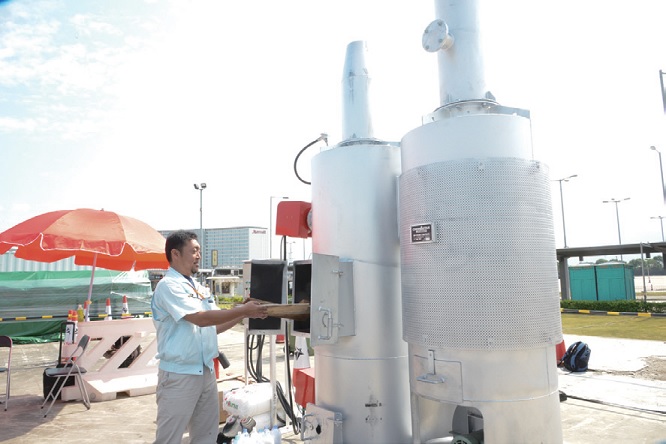
Renowned Japanese corporation Chuwa Industrial Co., Ltd.’s subsidiary Chuwastar debuted its smokeless incinerator F-1S at the expo, and held many live demonstrations on smokeless tyre and PET plastic incineration.
日本知名企業中和機工株式會社旗下品牌Chuwastar帶來首次在港亮相的F-1S型號小型焚化爐,並於國際環保博覽安排多場現場示範,展示如何無煙焚化車胎及PET塑膠。
Japan leads the way in extracting raw materials from waste household appliances
For some, there are buried riches in waste. Household appliances such as refrigerators and TVs, contain raw materials like metals, plastics and glass. Corporations such as Panasonic are extracting useful raw materials from recycled household appliances. Panasonic’s Recycling Business Promotion Team Councilor Shigehiko Nakayama remarked that natural resources such as metals are becoming scarce. It takes mining through 300kg of soil for 1kg of copper.
The high cost for mining has inspired Japan to extract raw materials from waste household appliances. The initiative has received wide public support, “Up to July this year, Japan has recycled over 150,000 tones of steel, 24,000 tones of copper and 13,000 tones of aluminum.”
Japanese exhibitor showcases smokeless incinerator
With Pay-As-You-Throw gaining prominence in the discussion on waste charging, more and more corporations and organisations are carrying out their own waste management. Apart from recycling, incineration is another option. Renowned Japanese corporation Chuwa Industrial Co., Ltd.’s subsidiary Chuwastar is best known for its smokeless incineration technology. Its small incinerator F-1S made its debut in Hong Kong at the Eco Expo Asia. The product uses only kerosene as fuel, and emits no toxic gases. It is particularly suitable for hospitals and estate management companies for their processing of medical waste and other mixed waste. The company staged a number of live demonstrations at the expo, showing how the incinerator can incinerate tires and PET plastics without emitting any smoke.
